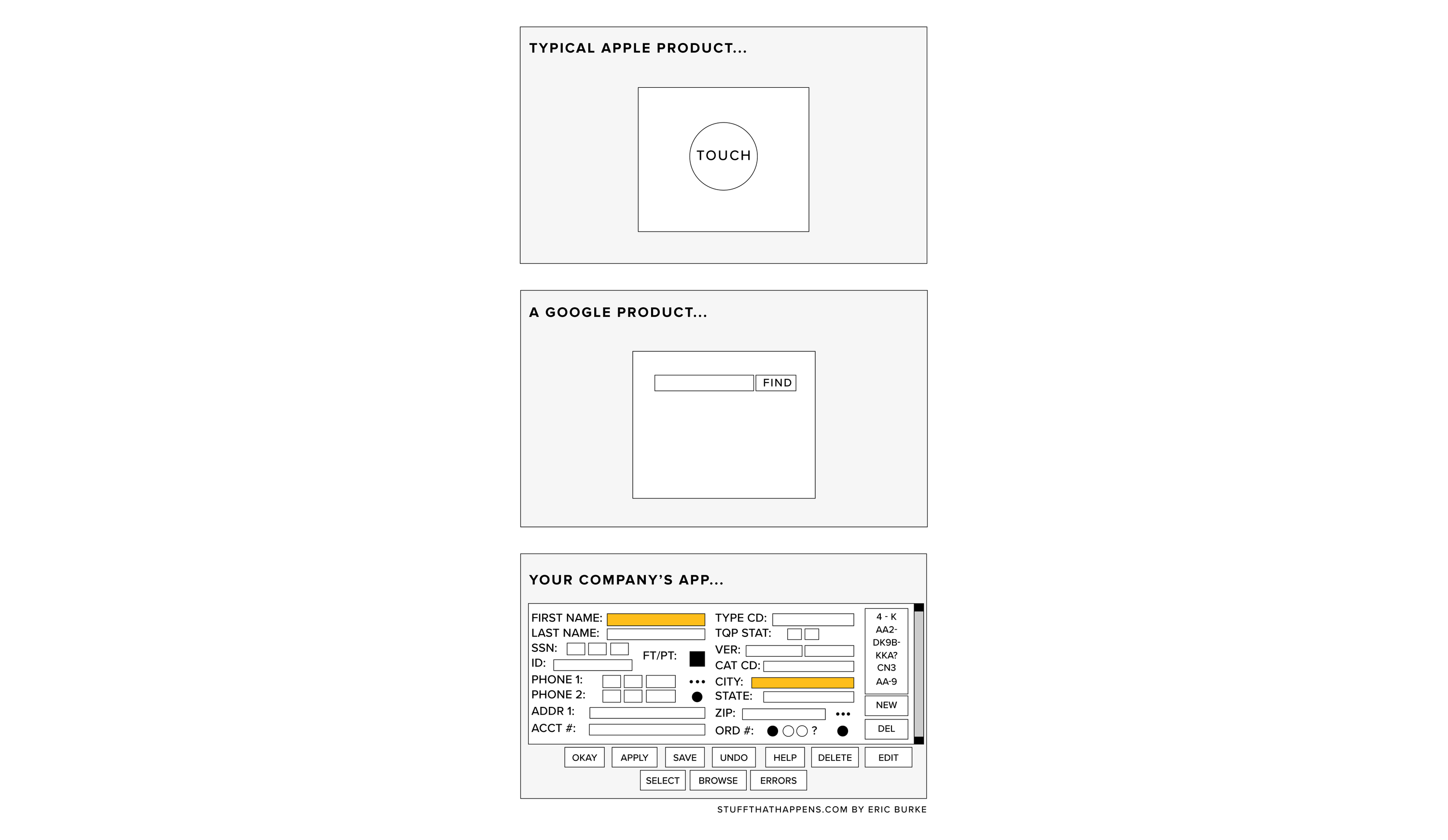
Create Meaningful User Experiences by Making an App Part of Your Digital Eco-System
Imagine you've volunteered to take part in a medical study to help bring about a vital treatment. You overcome the fear of potentially experiencing side effects for the greater good of research. You feel hopeful the process is there to support your journey, as you, in turn, support the common good.


I had the recent privilege of contributing to the rapid-testing of one the top Covid vaccines approved for distribution. I tell you, being onboarded onto a medical research study in the age of the New Norm has been one of the most fascinating Hybrid Digital Experiences, especially as designing these 'moments that matter' has been my profession for over two decades. I immersed myself in the role of a research participant, in an ecosystem of doctors, nurses and other medical stuff changing the world in the fight with Covid.
Role of Digital Products
Digital Products have never been more critical to the Connected Experience than they are today. They make us more efficient, create meaningful experiences, and make us feel safe and cared for – they make connecting with customers feel personal.
Whether you're in business of medical research, banking or retailing, the key to successful outcomes (conversion events) and then loyalty (repeat usage) lies in understanding of the role a Digital Product plays in your ecosystem. It cannot exist in isolation, but needs to be fully integrated into your blueprint, as an enabler to your strategic goal.
“In building hundreds of digital products, even before COVID accelerated the overwhelming need for these kinds of tools, we’ve learned that ongoing measurement, frequent usability testing, and purposeful iteration leads to better outcomes for your users and your business,” says Ben Johnson, VP of Emerging Technology.
Let's take Apps, as an example. They have made it into the marketing mix overnight, with the post-Covid reality putting many businesses in the App game now. McKinsey found that the US e-commerce experienced an equivalent of 10 years of growth in just the first quarter of the pandemic. With Apps playing a major part, but the speed of adoption meant that many businesses forget what their Apps’ play is or how to execute it.

Design, Analytics, AI, Engineering are at a state of maturity to seamlessly support customers in their App journeys without a need for convoluted onboarding or usability. In my experience, what’s often missing is the strategic understanding of the role Apps and other Digital Products play in the ecosystem, which informs UX and the necessary tech to support the path to successful conversion, sustained usage, and loyalty.
“Establishing the use of ongoing measurement is not simply starting to collect data and reviewing it, you must align data to your objectives (KPIs) and the related in-app experiences. Additional data points allow you to contextually learn about performance at a deeper level. We work with our clients to establish both data and measurement strategies to incorporate a strategic point-of-view in which accurate insights for optimizations are identified,” says Kathleen Lukasick, Group Analytics Director, Business Design.
Let's look at this through the lens of the medical study I took part in.
1. Arm Your Users with Purposeful Information
As a research participant, I recognized the many fears that came to mind before committing myself to the study, and how I felt on the day I showed up. The thoughts 'what if' or 'what's next' is something many patients and consumers alike experience when faced with uncertainty. That psychological state is further heightened when making big decisions, such as mine. But this can also extend to other parts in our lives, like buying a home, changing a career, starting to invest …or as simple as selecting a new banking partner.
I asked myself, 'Could have I been more informed?' Then, once in the study, 'Will I be supported all the way?'
Why is this important?
These are the very emotional reactions to ordinary feelings consumers experience every day when faced with making a decision. The experiences of the past year have made consumers more cautious in how they make key decisions, more reactive in expressing feelings of approval or dissatisfaction, and certainly more aware in the role Digital plays in supporting them in their journey.
In journeys involving key decisions in life, education on the subject matter and understanding of the required steps are critical inputs that often are the deciding factors whether or not to take part. That's also true of less critical moments in life.
How an in-App experience can help?
Remember, surfacing relevant content is key.
Empower users with access to information at their leisure, while they make an informed choice.
Customize to persona or personalize content to individual user needs.
Making it real for me?
In my medical research illustration, an option to download the research App early on would have been great.
An in-App tour of the experience, expanding my understanding of the various parts in the upcoming journey would have made me feel both educated on what to expect and at peace I'll be looked after.
This approach is applicable to all products and services: Use your App as an invitation to your brand. 75% of US consumers have tried different stores, websites, or brands during the COVID-19 crisis – have you asked yourself how this applies to your brand and how an App can be an effective marketing tool for your business, when properly integrated across channels? Design relevant content experience to create an understanding and positive anticipation of your offering.
2. Make It Easy for Customers by Leveraging Data and Analytics in a Connected Eco-System
As I arrived at the research center, I was welcomed with a piece of paper to check-in by noting my personal information, which was then transcribed wrongly into the system by an administrator to activate my study app. Without realizing the downstream impact of that error, I moved to review the consent forms on an iPad the design of which made me feel confident I knew what I was signing up for.
Initial validation with a doctor came next. Then an ask to download the research App, but snap a photo of the given PIN, as the App would only get activated after my medical interview with a nurse, coming next. There was minor confusion about having two registration numbers in the system from the two calls made as part of pre-visit registration. The medical was long, and if it were not for how cared and understood the nurse made me feel, with occasional jokes, I would have felt slightly frustrated why some of this could not have been pre-populated from my medical records or collected as part of a pre-screen.
An hour on, I was given the green light to be officially onboarded. That’s also when the email address entered in error at check-in came back to haunt both the nurse and I, as we couldn't figure out why the app wasn't letting me register (a password link generated at check-in bounced due to wrong email entered, and the system wasn't designed to create an alert). My experience designing apps came in handy figuring out the conundrum, but what if I were less digitally-able? That's time that could have been saved.
Why is this important?
Remove frustration customers often experience while entering their information during registration when their intent is to quickly get to their desired objective, not get stuck in 'digital paperwork.'
'Love at first sight,' comes a long way -- you've captured their attention, now keep it going with delightful experience and as little onus on users to join in the experience.
How an in-App experience can help?
Streamline UX design to onboard customers quickly to delight them with the experience and product early on.
Capture only legally required information to keep the engagement and conversation going.
Leverage 'Auto Fill-Ins,' predictive analytics or other digital data tools to baseline your user experience in what you already know about your users.
Embed conversational AI to increase engagement and stickiness.
Measure. Measure. …then measure some more to continually optimize the journeys.
Making it real for me?
Back to my Covid vaccine research, personal data collected in other systems (medical database for patient records, for example) and transferred to the App for validation as opposed to requiring me and others to enter manually, would have been a time saver (as much as 30 minutes!).
Confirmations sent to the phone are standard security practice as the mobile is the ultimate authenticator.
Deliver a data experience that feels supportive, not confusing and isolating,
In-App check-in interventions if something is taking longer than expected.
Leverage automation, analytics and AI to welcome customers to your brand, just as if they were physically walking into your shop, using intelligent data tools to create delightful experiences.
3. Measure Performance to Continually Listen, Learn and Adjust with Users' Best Interest at Heart
I wasn't sure how much longer the whole experience would take, as there wasn't anything to keep me informed of the steps in the process, while the nurse was doing a phenomenal job at making me smile (remember, I did this for the greater good of humanity, so my intent kept me going!).
The inoculation, observation and follow-up booking came next. I felt a sense of gratitude to be able to contribute to such an important medical research, but also a sense of relief that the process was done (hour and a half longer than I anticipated). There was no survey. No one checked how I felt about the journey, which was an opportunity for improvement missed.
There is a reason why Monzo leads the UK neobank market, most advanced in the world, with over 50% of the market share. It offered the most sought-after mobile banking tools among all banks, not just neobanks.
Why is this important?
Performance measurement is key to iterative design improvement.
Customers are even more vocal and open to share feedback, which can be facilitated by providing them with a platform to do so.
How an in-App experience can help?
Survey your customers on their in-App and overall connected experience.
Create tools that allow customers to rate individual contributors to their journey and provide improvement feedback.
Gamify engagement to solicit feedback.
Connect your eco-system to social platforms recognizing that the voice of the customer can be a powerful asset and your biggest threat, so keep it up!
Making it real for me?
A survey would have allowed me to share feedback for improving participation in research.
Connecting the App to give 'social shout-outs'.
Making it easy for customers to interact on their terms whenever and wherever they want through the use of your App is only half of success. Measure performance with the intention to truly listen, learn and adjust the experience to stay top of the Digital Product game!
Designing with Purpose
Taking just these three recommendations into consideration will help you define your App strategy and ultimately create user experiences that connect and drive meaningful outcomes for your business.
Learn more about our work with Hulu and Cadillac. Let's connect to learn how we concept, design, engineer and launch applications that drive value for our client organizations and help solve the most critical business challenges.


